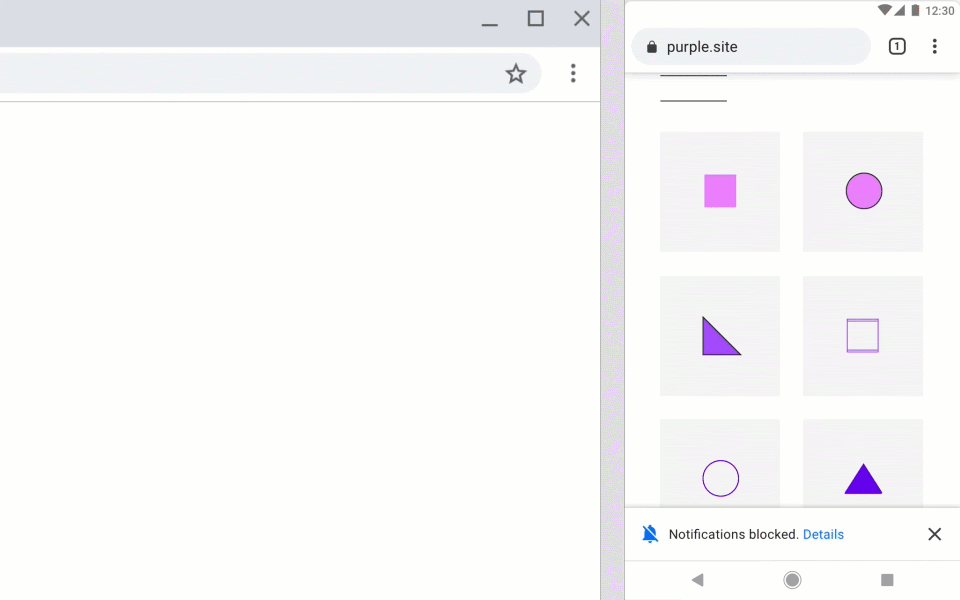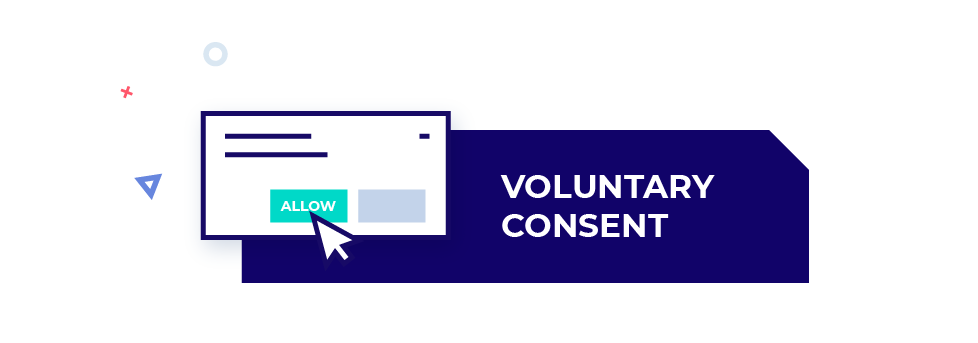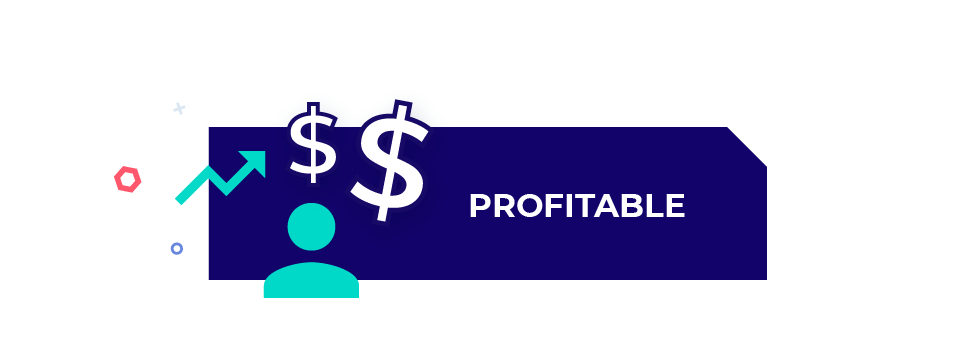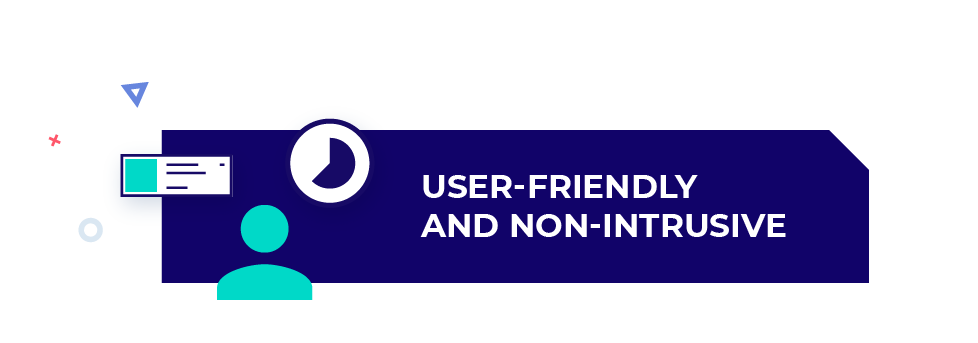February 4, 2020 was a day dreaded by the ad tech industry. The news dropped on the Chromium blog triggered speculations and frenzy among digital advertisers, but once we dig into the subject… it’s not as scary as it sounds.
We can already tell that it was not the doomsday of affiliate advertising. Also, it’s not the end of push advertising. And no, there’s no conspicuous planning to take over the world of ad tech by quietly cutting you off from your favorite cookies.
And for those still worried, here are the top 25 questions concerning Chrome 80 update answered for you. Read, relax and stay tuned for more!
1. What’s Chrome 80 update?
In order to keep Internet browsers secure and well-functioning, new features and security updates are added regularly. For Chrome, a stable version of an updated browser is released every six weeks. The update in question, known as Chrome 80 update, is simply yet another feature added to the current browser version. Only this time, the update has a direct relation to the affiliate marketing industry, and push traffic specifically.
This is because Chrome 80 update, released February 4, 2020, blocks third-party cookies and introduces the quiet UI notifications.
2. What does Chrome 80 update mean for affiliate advertising?
Many browser updates haven’t had the slightest influence on the ad tech industry, or at least not in a negative way. Similar should be said about the Chrome 80 update — yes, it does change things but whether it’s for better or worse for the affiliate marketing sector, is yet to be decided.
What we can tell three weeks into the world after the Chrome 80 update is so far, so good. No dramatic changes for push traffic have been detected, and other ad formats are not to be directly impacted by the Chrome 80 update.
What’s expected to change in the long run, though, is the quality of subscription lists, and thus push traffic leads. This is due to the new third-party cookies blocking policy. It will require a bit more testing to decide if the quality will get better, bringing us pure conversions without wasting our resources where it’s not worth it, or if it won’t be affected at all.
OLD NOTIFICATION PERMISSION REQUEST MODEL

3. Why did the update introduce the quiet UI permission?
As stated on the Chromium Blog:
“Notifications on the web enable users to receive important updates even when they are not interacting with a website. Notifications are an essential capability for a wide range of applications including messaging, calendars, email clients, ride sharing, social media and delivery services.
Unfortunately, notifications are also a common complaint as many websites request the notification permission on first visit rather than at contextually relevant moments in the user’s journey. Unsolicited permission requests interrupt the user’s workflow and result in a bad user experience.”
This proves the change has been made to meet the users’ needs, while still remaining as non-intrusive as possible. Let us remember this was the sole reason why push ads became so successful. It was thanks to their user-friendly and non-intrusive form which allows users to stay connected to the online world even when they’re not actively interacting with it.
If that’s the true reason for introducing the quiet UI change, then we can assume that what was once considered the most convenient option for users (push notifications), has been simply exploited to an extent at which it became too intrusive. Hence, the need for re-inventing the communication model and adjusting it to the current market trends while keeping its core characteristics.
4. What’s the difference between the prior push notifications permission and the quiet UI?
To break things down for you, here’s an overview of how the two notification permission models differ from each other.
A. Chrome 80 update introduces a new notification permission model to retain push notifications non-intrusiveness and user-friendly approach due to the current market trends and push notification requests saturation.
NEW NOTIFICATION PERMISSION REQUEST MODEL

B. Chrome 80 users will be able to opt-in to the new UI manually, unlike with the default display of the previous push notification permission.
C. The quiet UI will be automatically enabled for users under two conditions:
- For users who typically block notification permission requests
- On sites with very low opt-in rates.
D. Users can enroll for quieter prompts manually, or disable it completely.
5. How does Chrome 80 update affect push traffic?
The Chrome 80 update, because of its changes to the way publishers will be able to gather their push subscribers, is speculated to affect the quality, price, and volumes of push traffic.
6. Will it affect the quality of push traffic?
Yes, it will. As shown already, the Chrome 80 update was launched to improve the user-experience of push notifications. With permission requests jumping at users from all different places, at all times, users may have got deterred from subscribing. They’d often opt for block or click allow just to get rid of the request. Thus, the subscription lists built by publishers would consist of fewer or false users.
With the Chrome 80 update, publishers are meant to get fresh and motivated users to willingly subscribe to receive push notifications from their websites. Such clean-up is expected to have a positive impact on the quality of push traffic.
7. Will push traffic become more expensive because of Chrome 80 update?
Yes, it probably will. Quality comes with money — that’s a universal truth. Fresh and better-segmented lists of push subscribers are quite probable to cost more than previously.
Let us remember, though, that push traffic was once considered way more expensive than other ad formats, too. Yet, with the results clearly showing positive ROIs, advertisers gladly accepted the state of things and rushed to run push traffic ad campaigns that swept the 2019 affiliate makings.
The same scenario can be expected now — yes, the cost will probably rise, but so will your conversions.
8. Will there be fewer push subscribers?
Yes, there will probably be fewer push subscribers after Chrome 80 update. But hey, less is more! Although there are thousands of users subscribing to push notifications every day, it doesn’t mean they’ll all convert. If a big chunk of those subscriptions are false ones, a clean-up like this should only be a good thing. The amount of available push traffic may get smaller, and the price can get even higher, but it will only mean advertisers can expect well-segmented and better-converting sources of traffic.
This is because users who allowed to receive push notifications after Chrome 80 update, fall into a group of users who often and willingly do so, or did it on a page with high opt-in rates, hence already proven a credible source of traffic.
MANUAL ENROLLMENT AND OPT-OUT SETTINGS FOR DESKTOP & MOBILE

9. How does Chrome 80 update decide what and when to block?
This will be done according to rules announced on the Chromium Blog. Although we feel they require further specification, it is all Chrome 80 update gives us at the moment.
A. Users who frequently block push notification requests.
In such a case, Chrome 80 will block notification subscription requests by default. Users are still able to manually allow or block subscription requests. They can also set their preference as to whether they will be able to see such requests again or not.
B. Websites with low opt-in rate.
For such websites, Chrome 80 will block all push notification requests by default. This can happen if visitors frequently click block for receiving push notifications on a given website. As Chrome collects the data, it will block push requests on such websites as well as those using push notifications for malware and spam.
C. Preference Settings.
All users have the option to block all push requests using the quiet UI as part of their settings. They can also opt-in to receive them upon their wish.
10. Does Chrome 80 update mean the end of push traffic?
No.
11. How will publishers gather their push subscription lists with Chrome 80 update?
Publishers will still be able to gather push subscription lists with Chrome 80 update, and the process won’t change much, in fact. The main change is the Chrome 80 blocking policy explained below.
A. If a page is visited by a user who frequently blocks push notification permission requests, the chances for subscriptions are small anyhow. In order to keep the experience user-oriented, requests will be blocked automatically. But if a visitor is truly interested in the content of a page, he or she will naturally be able to opt-in. Hence, publishers will gather only quality leads, saving themselves the trouble of low-quality traffic.
B. For pages with low opt-in rates, although there isn’t any sufficient information on what a “low opt-in rate” is, the process will be made harder. This is because data collected by the Chrome browser will flag the page as unattractive to users. If unattractive, then push subscription requests will be blocked. This is meant to protect users from receiving unwanted or low-quality content. Again, if users decide to opt-in, they can do so by changing the browser settings manually.

Publishers can try implementing or ensuring the following tips to keep their pages as attractive and user-oriented as possible. In this way, they’ll be able to prevent push subscription requests from being automatically blocked on their pages.
Here are some good practices for requesting the notification permission brought by the Chromium blog team, for example:
- Test a site’s permission request flow with the quiet notification permission UI.
- Don’t ask users to sign up for web notifications when they first arrive at your page.
- Instead, wait until users understand the context and see the benefits of receiving notifications before prompting the permission requests.
- Don’t display a pre-prompt in the content area before triggering the native permission prompt as it may interrupt the user journey.
- Sites that request permission at contextually relevant moments enjoy lower bounce and higher conversion rates.
- For help with user permission UX, you can refer to this 5-minute video on improving your user permission acceptance rates.
- Read about best practices when requesting permissions.
12. Is there any measurable evidence of how the update affected push traffic advertising for publishers?
No dramatic changes or spikes in the volumes of push traffic have been observed yet, but the effects of Chrome 80 update are yet to unfold.
13. Is there any measurable evidence of how it affected push traffic advertising for advertisers?
Just as in the case of publishers, no dramatic changes for advertisers have been observed.
There are some reports of quite profitable push subscription campaigns after the update on the community forums, but the industry needs more data to call it a success. As for other results of Chrome 80 update, these are yet to unfold.
14. What are the predicted consequences of Chrome 80 update for publishers?
As stated already, there are two main scenarios for the world after Chrome 80 update.
Either not much will change, as people who wish to subscribe to receiving push notifications will do so anyhow. Or, if the update significantly hinders the performance of push traffic, certain measures will be required to keep publishers from losing their subscription lists.
15. What are the predicted consequences of the update for advertisers?
Again, this can mean two things for push traffic advertisers. One is that little will change, and if so, it will change for the better. Higher quality traffic can only mean better conversion rates, even if for a bit higher price.
The second option would be that, if publishers have problems collecting push subscription lists, new ad formats will emerge to substitute for push traffic. Whenever there’s a niche in the market, the ad-tech industry is down to take care of it.

16. Will Chrome continue to implement such updates?
Yes, these are done regularly and we can expect more updates like this any time. Thanks, Google!
17. How can publishers prepare for changes like Chrome 80 update?
Since such changes are inevitable, and every major update causes turmoil and frenzy, certain steps can be taken by publishers to go through similar situations painlessly.
- Monitor industry news, e.g. the Chromium Blog, forums, tech news websites, etc.
- Comply with the most popular browser policies.
- Update the process and analyze how user-friendly it is.
18. How can advertisers prepare for changes like the Chrome update?
Since advertisers depend on the supply provided by the publishers, there are little advertisers can do in such a case.
Preparation can thus mean more versatile advertising (focused on various ad formats) or trying out new opportunities the ad-tech industry rushes to provide us with, eg.: in-page push traffic.
19. How does in-page push differ from push ads?
In-page push traffic, though different in technical terms, looks and feels a lot like push traffic. The main characteristics of in-page push traffic are:
- In-page push ads are shown directly on a publisher’s website.
- In-page push ads can be optimized for both desktop and mobile.
- In-page push ads are made to resemble push notifications.
- In-page push ads look similar to push ads but differ in technical terms.
- In-page push ads don’t require subscription lists.
- In-page push ads work for iOS and Mac OS devices.
- In-page push ads are not affected by Chrome 80 update.
- In-page push ads are immediate, meaning there are no delays between the time of an ad impression and the time of an ad click.
20. What does it mean for in-page push?
Apart from the fact that in-page push came on the market at a convenient time given Chrome 80 update — absolutely nothing.
In-page push doesn’t require subscription lists since in-page push ads are displayed directly on a publisher’s website. It’s a different kind of ad traffic. This means they’re independent of Chrome 80 subscription requests blocking and can act as an alternative to where push ads won’t work.

21. Will in-page push substitute the push traffic?
The two ad formats look similar, they have the same goal — to convert — but the process behind getting those conversions is different.
While push traffic has been hailed the ad format of 2019 for its directness and non-intrusiveness, allowing users to interact with ads whenever they feel like it, the in-page push traffic does not meet those requirements.
In-page push ads are shown to users only when they’re actively browsing a given website. In this way, it’s more of a banner ad resembling a push notification.
On the other hand, where using push ads won’t be possible anymore, in-page push traffic seems like a great alternative. Also, advertisers don’t have to worry about the push ads conversion delay.
Whether in-page push will substitute push traffic cannot be clearly stated yet. Plus, we’d recommend looking at the two as complementing components rather than competing ad formats. Let’s use what the industry gives us, test it, and see for ourselves.
22. What’s the future of cookie-based tracking after the update?
Google, Safari, Firefox — these digital giants are currently working on getting rid of the third-party cookies, as has already been announced. They plan to complete the process in two to three years. This means third-party cookies based advertising will surely need some reiteration. Luckily, measures have already taken, and even if, or when, the third-party cookies cease to exist, we hope there will be an alternative waiting.
23. Can we drop using third-party cookies tracking at all?
Some have done that already, so the answer is — yes, we can. It is possible, and will most probably become a common practice quite soon.
A current alternative seems to lay with SSL and HTTPS certificates ensuring secure and safe data tracking, without the risk of being ridden by Chrome 80 update. If you haven’t switched to HTTPS protocol yet, well… you’d better hurry up.
24. Will other browsers follow Chrome?
Safari and Firefox have done that already and Chrome has just joined the team. Those who haven’t will surely do so soon trying to catch up with the most popular browsers.
25. What will the future bring for affiliate advertising?
Well…only God knows.
Adapt, Adjust & Accommodate!
Run Your Campaigns With Zeropark Now
Kinga Gawron





